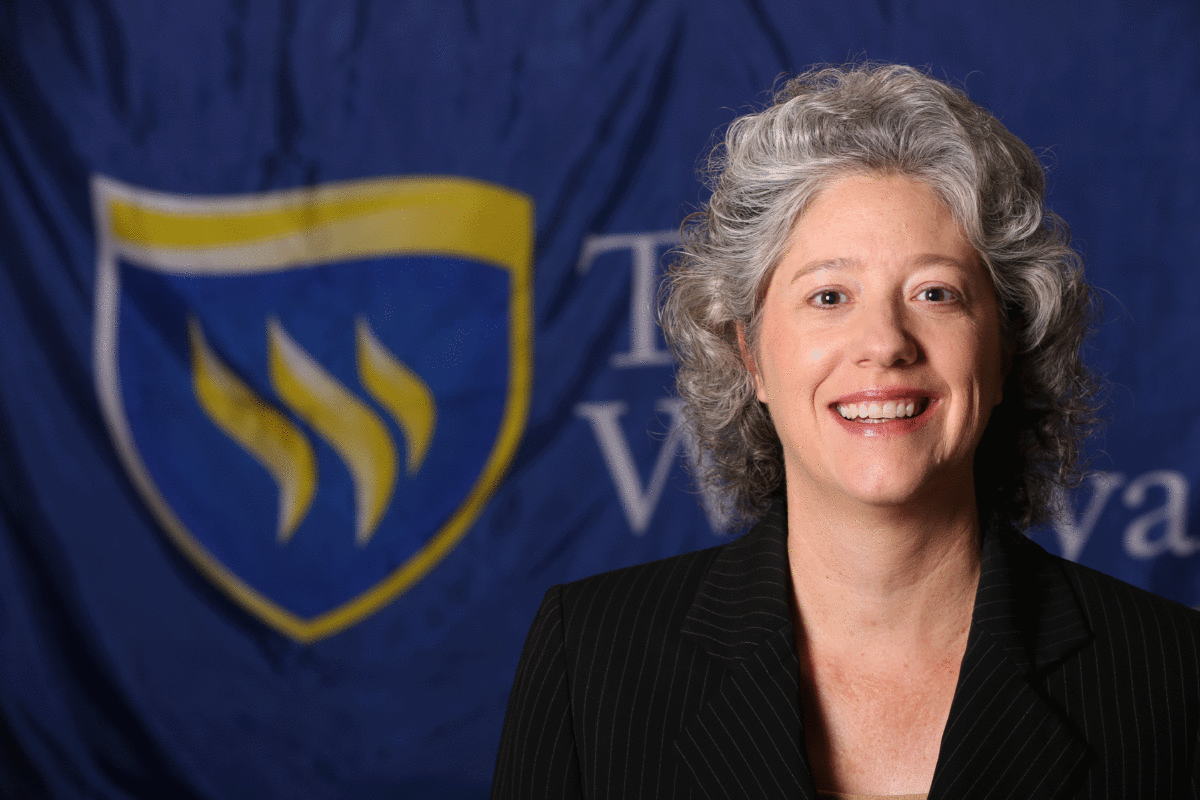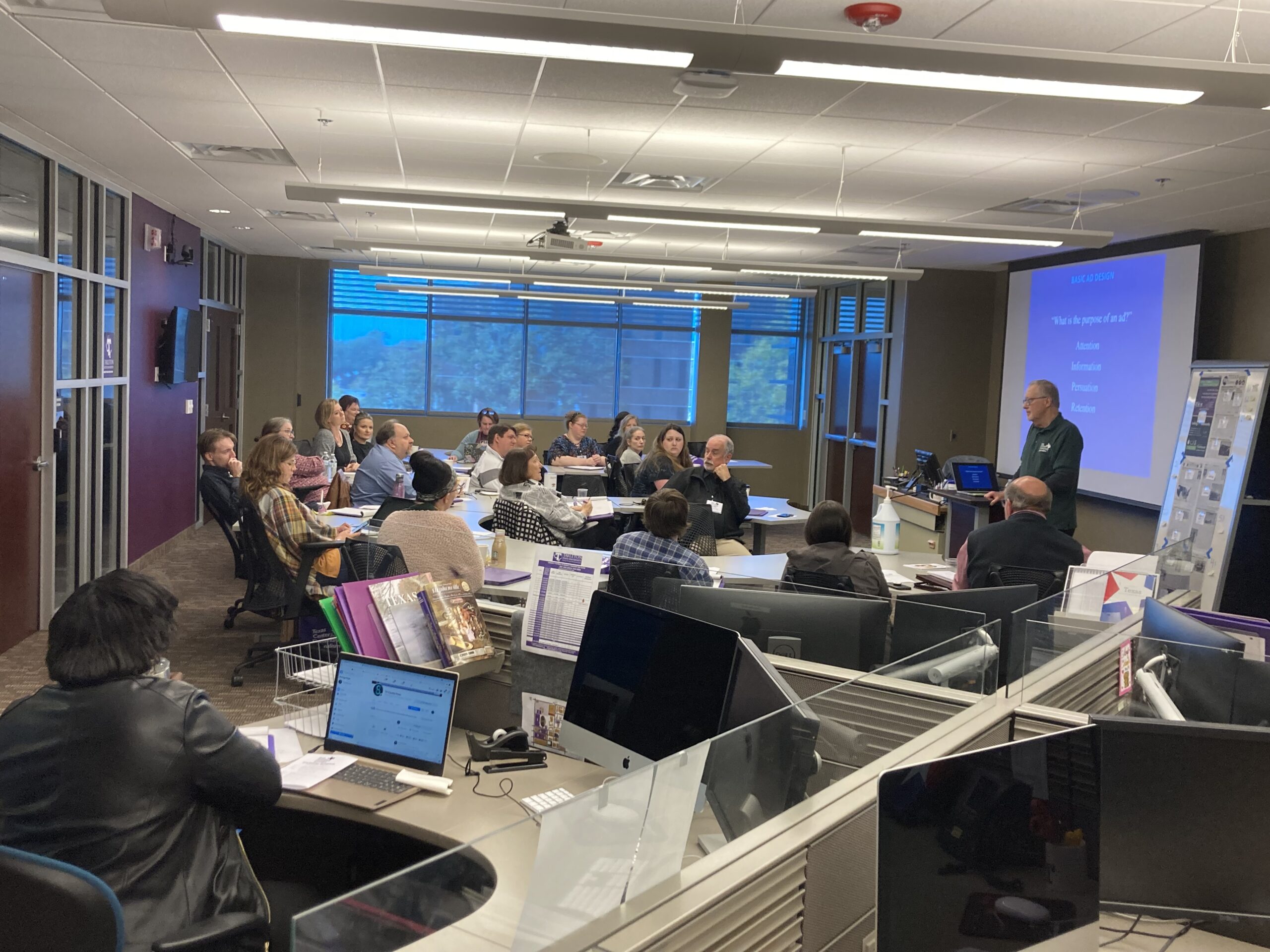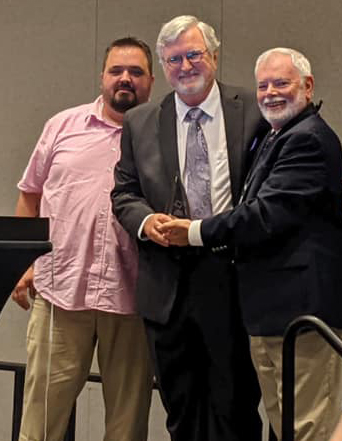Randy Mankin is a friend of mine. He is the owner and publisher of the The Eldorado Success and Big Lake Wildcat, both award-winning weekly newspapers in West Texas. Eldorado, you may remember, was the site of the YFZ ranch, a religious compound headed by a man named Warren Jeffs.
Jeffs is a self-appointed prophet in a very extreme group on the far fringe of Fundamental Mormonism. His compound in Eldorado housed hundreds of people who were members of polygamist families. Randy’s work at the Success was instrumental in aiding the FBI investigation that ended in a raid on the FFZ Ranch.
Randy was featured in the recent Showtime documentary “Prophet’s Prey,” which recounts the story of the experience in Eldorado.
When the raid initially occurred, the national media descended on Eldorado. At first, he said, he was inviting to the national correspondents. He opened the back of his office to them and offered internet connections. He felt like he had entered the big leagues of national journalism.
Soon, though, Randy became disenchanted. He said the visiting correspondents were stealing his sources and, even worse, getting the story wrong.
He said what they offered as news nowhere near reflected the true facts in the case. Randy said a reporter from CNN was sitting in his office — he won’t say what his name was, but he assured me it is a household name.
The correspondent told him: “Randy, you’ve got it good. You are a weekly newspaper. You have the luxury of getting the story right. We have to get it first.”
Sadly, the internet (and now social media) has turned the 24-hour news cycle into a 10-minute news cycle.
As a result, the race to get the story first has negated the need to get it correct. A senior editor and writing coach at the a major-market daily in Texas admitted to me that they are posting breaking news to their website written by rookie reporters – stories that have not been read by an editor beforehand.
“But the flip side,” he said, “is you can always correct the story in real time once it’s been posted online.”
This is where social media has taken journalism.
The news has become entertainment and the facts have suffered. I am amazed every time I hear someone complain about “fake news” — it exists because there is a market for it.
Social media has conditioned folks to require news immediately, but they then complain when it is not accurate.
It seems as if people don’t care to be informed. They want to be entertained. If folks really wanted to be informed, donations to public radio and daily newspaper subscriptions would both be increasing. Sadly, they are not — but I digress.
I had to make a judgment call concerning rushing a story to digital media once as the publisher of a county seat weekly in Northeast Texas.
Early one evening, in late summer, a boy was accidentally shot and killed near downtown. It was an accidental shooting where three high school boys were driving a local man’s truck, with permission. The man who owned the truck was well known and served on some local boards.
One of the boys discovered a pistol in the man’s console and started waving it around.
He fired it accidentally and killed his friend.
The young man who died was African-American. The two others were white. They were all three members of the high school football team who, according to all the polls, were destined for great success that upcoming fall.
The season was to open in two weeks and the dead boy was one of their stars.
Those are the facts of the case, but we didn’t know all of the facts when our editor called me that night. I did not live in the community, but he did and he was on the ground.
Out-of-town television trucks were arriving and gossip was swirling.
Our editor was out of breath on the phone. In about 30 seconds he explained a kid was dead and one of his teammates did it. The scene was roped off and the gun that killed him belonged to an upstanding citizen.
“I just wanted to let you know before I break it on the website,” he said.
“Have you talked to the chief of police?” I asked.
“No, he is busy right now with the investigation,” he said.
“Then how do you know what you just told me?”
“It’s just what folks are saying, you know? On the street.”
“So you have not verified any of what you just told me with credible sources?”
“No.”
“Have you seen a dead body? Did you hear a gunshot? Have you seen the J.P. on the scene?”
“No.”
“Then what are you going to post on the website?”
“Everything I’ve heard.”
“From whom?”
“Around town.”
“OK. Slow down,” I said. “What do we know? Really know? What do we know that we can verify with 100 percent accuracy?”
“Well,” he said slowly, “we know the local police are investigating an incident in downtown. We know that traffic is being diverted around the area and emergency vehicles from multiple agencies have been dispatched to the incident to assist.”
“Then post that on Facebook and wait until we know more,” I said.
“What? Just that?” he said. “There is more to it.”
“How do you know?”
“I heard.”
“From whom?”
“OK, I get your point. But there is a story here and it is in our town and the TV trucks are setting up and we need to beat them to the punch.”
“I know,” I responded. “It sounds like you do have a story there, and I am sure everything you’ve heard so far is close to accurate. If it is, we have a boy dead, right?”
“Yeah.”
“And we have a family in shambles, right?”
“Yeah.”
“And a community that is going to grieving for a long time, right?”
“Yeah.”
“And all we know is what you told me? What we have heard has not been verified?”
“Yeah.”
“Well,” I said, “after the TV trucks leave and the scene is cleaned up, we are still going to be here. The newspaper has been serving this town a whole lot longer than the out-of-state TV station. The TV station is not going to run this kid’s obituary. The TV station is not going to make its lead story next week the candlelight vigil in this kid’s memory. And the TV station is not going to brave the elements with the football team for the next 10 to 15 Friday nights as they dedicate game after game to this kid’s memory, are they?”
“Well, no.”
“Then do our community the service of telling them what we know and follow up later. We will tell the story, in its entirety, just not right now. Not this minute. Go on Facebook and tell them what we know and tell them we are not going to speculate further until we know more.”
He accepted my advice and posted something like the following on Facebook:
“Local police are currently working an emergency situation in the downtown area. Little has been confirmed about the nature of the incident at this moment, but traffic is slow in the area. Out of respect to those involved, and their families, we will refrain from any speculative reports about the incident until we can verify the entirety of the story. Please see next week’s edition for more information.”
We gained much respect in the community for handling the post in that manner. The accolades were many and the criticism was almost non-existent.
The boy was still dead and the community took time to grieve. We were there the entire way.
We could have aired out what we thought we knew. But we couldn’t verify any of it. And as it turns out, we would have had to issue some painful corrections if we had.
The point is this: Media is people serving people by telling stories about people and being funded to so do by a whole other group of people. Media is a business, and business is relational. Relationships involve people and people are humans.
People are served best, and relationships are nurtured, when they are told the truth and not lied to — no matter whether the lie was intentional or not. Fake news produced due to ignorance is still fake news.
Ethicist Mark Putnam said: “In many cases ignorance can land you in just as much trouble as if you intentionally did something wrong. Sure, you can’t know everything, but the fact that you can know something puts the ball in your court.”
Knowing when to hold a story is just as great a skill as knowing how to effectively get the scoop. Becoming familiar with each is at the core of the responsibilities we bear to our communities.



